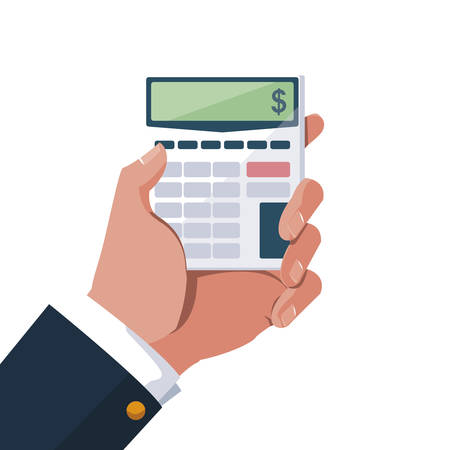Understanding Catch-Up Contributions
As retirement draws closer, maximizing your savings becomes increasingly important, especially for self-employed Americans and those utilizing Solo 401(k) plans. Catch-up contributions are a valuable tool designed specifically to help individuals aged 50 and over boost their retirement nest egg. While the annual contribution limits for retirement accounts can seem restrictive, catch-up provisions allow older savers to make additional deposits above the standard limits. For self-employed professionals—whether freelancers, consultants, or small business owners—who often face unique financial planning challenges, these extra contributions can make a significant difference in meeting long-term goals. Understanding how catch-up contributions work within a Solo 401(k) is crucial for anyone looking to optimize their retirement strategy and ensure greater financial security during their golden years.
Eligibility Criteria for Catch-Up Contributions
Understanding who qualifies for catch-up contributions in Solo 401(k) plans is crucial for maximizing retirement savings, especially if you’re self-employed. The IRS sets clear guidelines based on age and employment status. Below, we break down the key eligibility criteria and what self-employed Americans need to know.
Key Age Requirement
The most important factor for catch-up contribution eligibility is age. The IRS allows individuals aged 50 or older by the end of the calendar year to make additional “catch-up” contributions to their Solo 401(k). This rule applies regardless of whether you are a sole proprietor, independent contractor, or single-member LLC owner.
Employment Status and Plan Participation
To qualify, you must be actively participating in a Solo 401(k) plan. This means you must have earned self-employment income from a business with no full-time employees other than yourself (and possibly your spouse). Side hustlers and freelancers who set up Solo 401(k)s through their own businesses also meet this requirement.
Eligibility Summary Table
| Requirement | Description |
|---|---|
| Age | Must be 50 or older by December 31st of the contribution year |
| Self-Employed Status | Sole proprietors, LLCs, S-corps, partnerships with no full-time employees except owner/spouse |
| Plan Participation | Must have an active Solo 401(k) established in your name/business |
| Earned Income | Must have net self-employment income to contribute |
Special Notes for Self-Employed Individuals
If you turn 50 at any time during the year—even on December 31—you are eligible for catch-up contributions for that entire tax year. However, only earned income from self-employment can be used to determine contribution limits. Wages from other employment do not count toward your Solo 401(k) eligibility or calculation. Be sure to review your business structure and income regularly to ensure ongoing eligibility as IRS definitions can change.

Annual Limits and Recent Changes
Staying current with annual contribution limits is critical for maximizing the benefits of a Solo 401(k), especially when you’re self-employed. The IRS sets these thresholds every year, taking into account cost-of-living adjustments to ensure retirement savings options keep pace with inflation. For tax year 2024, the total Solo 401(k) contribution limit—including both employee deferrals and employer profit-sharing contributions—has increased to $69,000, or $76,500 if you’re eligible for catch-up contributions (those age 50 or older). This breakdown reflects the dual role self-employed individuals play: you can contribute as both an employee and an employer.
The employee elective deferral limit for 2024 is $23,000, up from $22,500 in 2023. If you’re age 50 or older by the end of the calendar year, you can make an additional catch-up contribution of $7,500. As your own employer, you can also contribute up to 25% of your net self-employment income (after deducting half your self-employment tax), capped by the overall annual limit. These numbers reflect recent IRS updates and are designed to help business owners and freelancers compete with traditional employers in terms of retirement savings potential.
It’s important to note that these limits apply per individual, not per plan—so if you have multiple retirement plans (for example, through side gigs or part-time employment), your combined elective deferrals cannot exceed the annual threshold. Keeping track of these annual changes and leveraging catch-up contributions can be a game-changer for building your retirement nest egg efficiently while enjoying maximum tax advantages.
Tax Benefits and Strategic Advantages
For self-employed Americans utilizing Solo 401(k)s, catch-up contributions offer powerful tax benefits and strategic advantages, particularly for those nearing retirement age. By leveraging these additional contribution limits, individuals aged 50 or older can significantly enhance their retirement savings while optimizing their current tax situation.
Tax-Deferral Advantages
The primary benefit of catch-up contributions lies in tax deferral. Every dollar contributed as a catch-up amount reduces your taxable income for the year if you are using a traditional Solo 401(k). This means you pay less in federal income taxes today, allowing your investments to grow tax-deferred until withdrawal during retirement. For high-earning self-employed professionals, this advantage is amplified, as reducing current taxable income may also lower exposure to higher marginal tax brackets.
Reduction of Taxable Income
Catch-up contributions directly impact your adjusted gross income (AGI), which influences eligibility for various credits and deductions. Consider the following example:
| Age | Standard Contribution Limit (2024) | Catch-Up Contribution Limit (2024) | Total Potential Contribution | Potential Tax Savings (Assuming 24% Bracket) |
|---|---|---|---|---|
| Under 50 | $23,000 | N/A | $23,000 | $5,520 |
| 50 or Older | $23,000 | $7,500 | $30,500 | $7,320 |
Key Takeaway:
By maximizing both standard and catch-up contributions, self-employed individuals aged 50+ can shelter an extra $7,500 per year from taxes, translating into thousands of dollars in annual tax savings.
Compounding Benefits for Late Savers
Catching up on retirement savings later in your career is not only possible but also financially advantageous due to the power of compounding returns within a tax-deferred account. Additional contributions made through catch-up provisions have years to grow without immediate taxation on earnings. Even a five-to-ten-year time horizon before retirement can make a significant impact when consistently maxing out allowable contributions.
Strategic Planning Tips:
- Bunching Contributions: If cash flow allows, making larger catch-up contributions early in the year maximizes time in the market.
- Roth vs. Traditional Solo 401(k): Evaluate whether after-tax Roth contributions or pre-tax traditional contributions better suit your projected retirement tax scenario.
- Annual Review: Reassess income projections and adjust catch-up contribution levels annually to optimize both current and future tax outcomes.
In summary, catch-up contributions are a critical lever for self-employed Americans aiming to reduce taxable income now while accelerating retirement preparedness. The combination of immediate tax savings and long-term compounding growth underscores their role as a smart financial strategy for late savers.
5. How to Maximize Your Catch-Up Contributions
Leverage Every Dollar: Strategies for Self-Employed Americans
Maximizing catch-up contributions to your Solo 401(k) can be a game-changer for your retirement savings, especially if you’re self-employed and aiming to close the gap in your nest egg. Here are practical, data-driven steps to help you fully utilize this opportunity.
Automate Your Savings
Set up automatic transfers from your business account to your Solo 401(k). This removes the guesswork and ensures that each eligible dollar is invested without delay. Many online business banking platforms now allow you to schedule recurring contributions, making disciplined investing easier than ever.
Time Contributions Strategically
If your income fluctuates throughout the year, consider front-loading your contributions during high-earning months. This reduces the risk of missing out on annual limits due to unforeseen business expenses later in the year. Tracking your cash flow quarterly can help identify optimal contribution windows.
Coordinate with Tax Planning
Work closely with a tax advisor or CPA who understands self-employment income structures. Strategic catch-up contributions not only build retirement security but also lower taxable income for the year—delivering a double benefit. Use IRS Form 5500-EZ if your Solo 401(k) balance exceeds $250,000 to stay compliant.
Increase Contributions as Income Grows
As your business revenue increases, periodically review and boost your contribution rates. Even small percentage increases can compound significantly over time, thanks to tax-deferred growth within the 401(k) structure.
Monitor Annual Limits and Adjust Accordingly
The IRS updates contribution limits regularly. For 2024, individuals aged 50 and older can contribute an additional $7,500 in catch-up funds, on top of standard deferral limits. Stay informed about these numbers and set calendar reminders to reassess your plan annually.
Actionable Tip:
Use budgeting apps designed for entrepreneurs (like QuickBooks Self-Employed or Mint) to track business profits and proactively allocate a portion towards your Solo 401(k), making catch-up contributions part of your regular financial routine.
6. Common Mistakes and How to Avoid Them
When it comes to making catch-up contributions to Solo 401(k)s, self-employed Americans often encounter avoidable pitfalls that can have significant tax and retirement planning consequences. Below is an overview of the most frequent errors and practical advice for staying on track.
Miscalculating Contribution Limits
One of the most common mistakes is overestimating or underestimating how much you can contribute—including both standard and catch-up amounts. For 2024, individuals age 50 or older can contribute up to $7,500 in additional catch-up contributions on top of the regular limit. Misunderstanding these limits can lead to excess contributions, which may result in penalties or required corrective distributions.
Missing Deadlines
Another frequent error is failing to make contributions before the applicable deadlines. Generally, employee deferrals (including catch-up) must be made by December 31st, while employer contributions may be made by your tax-filing deadline, including extensions. Missing these cutoffs could mean losing out on valuable tax benefits for the year.
Improper Recordkeeping
Lack of clear documentation—such as not keeping records of your age-based eligibility, payroll records (even for solo businesses), or contribution amounts—can complicate IRS reporting and increase audit risk. Make sure all records are up-to-date and stored securely.
Guidance for Staying Compliant
- Review IRS guidelines annually to confirm current contribution limits.
- Set calendar reminders for key deadlines—both end-of-year and tax filing dates.
- Work with a qualified tax professional familiar with Solo 401(k) rules for self-employed individuals.
- Maintain detailed records of all plan documents, contribution calculations, and correspondence with your plan provider.
Proactive Compliance Pays Off
Avoiding these mistakes ensures you maximize your retirement savings potential while minimizing headaches at tax time. By staying diligent and informed, self-employed Americans can take full advantage of Solo 401(k) catch-up contributions without costly missteps.

